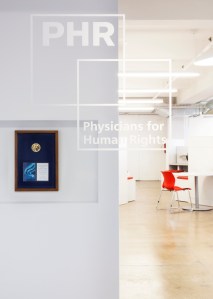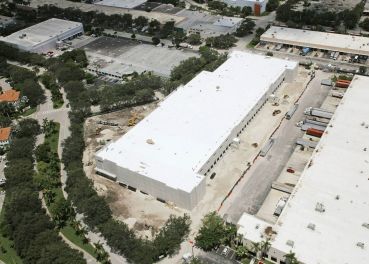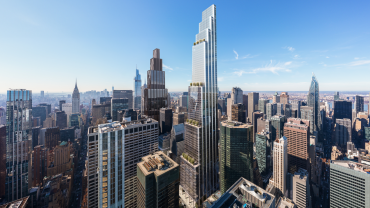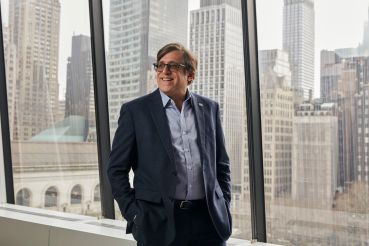The prominent human rights organization Physicians for Human Rights has relocated from Cambridge, Mass. into its new 8,000-square-foot headquarters at 256 West 38th Street, where the Nobel Peace Prize it won jointly as a member of the International Campaign to Ban Landmines now greets guests. Founded in 1986, PHR uses medicine and science to help prevent and stop atrocities and severe human rights violations and has conducted investigations in more than 40 countries around the world. The nonprofit wanted to retain the space’s open plan on a “tight budget,” said Asifa Tirmizi, a co-founder with Scot Campbell of Tirmizi Campbell, the designer of the office. The result: a light-filled space that retains its industrial charm but with an array of contemporary additions. “The warm palate of the conference center contrasts nicely with the organic feel of the workstations,” said Ms. Tirmizi, who discussed the look and feel of a headquarters worthy of a Nobel Peace Prize winner.
Upon entering, guests can view the organization’s Nobel Peace Prize encased in a custom display illuminated by fixtures from Luceplan. “We contemplated where to put it for a while,” Ms. Tirmizi said. “At the end we thought that as a small organization this was a huge accomplishment, so we recessed it into a niche right off of the elevator and through the glass doors.”
Tirmizi Campbell preserved the space’s loft-like qualities, restoring the exposed ceilings and refinishing the concrete floors to complement the light-filled open layout. The neutral color palette of whites and grays is complemented by contemporary glass, concrete, wood and metal, with bright punches of color and aqua and red furniture.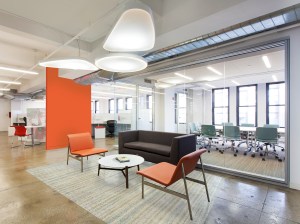
The reception area is canopied with three large light fixtures next to a feature wall in PHR’s signature orange. Signage may be added to the wall later and the Luceplan lights, with a mix of fluorescent and LED, are wrapped in stretch fabric to give a “soft and diffuse life to the space, which is perfect to warm up the space and concrete floors.”
The designers developed open workstations made out of metal and laminate positioned at 120 degree angles, which “gives a more organic layout than your typical cubicle.” Interchangeable magnetic flat panels on their exteriors display images from PHR’s many global initiatives to “create an identity for them 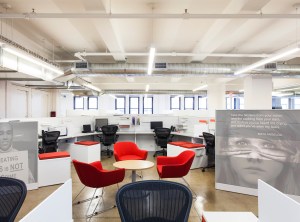 throughout the space… We tried to make them as flat and clean as possible to easily interchange their messages and work,” Ms. Tirmizi said.
throughout the space… We tried to make them as flat and clean as possible to easily interchange their messages and work,” Ms. Tirmizi said.
The flexible conference room doubles as a library and can be divided into three smaller rooms or opened up into one large boardroom or auditorium. The dividing walls are made of glass to allow maximum light in. “We really just wanted light to easily come through,” Ms. Tirmizi said. “Typically people want some sort of band or frosting, but they wanted a very clean look.”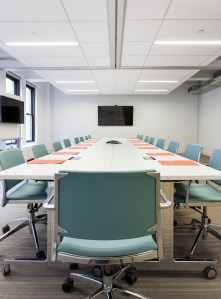
*This article appeared in the May 7 print edition of Commercial Observer

